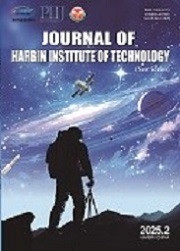| Author Name | Affiliation | | CHANG Xiao-hua | Deep Space Exploration Research Center,Harbin Institute of Technology,Harbin 150080,China
Beijing Institute of Astronautical Systems Engineering,Beijing 100076,China | | CUI Hu-tao | Deep Space Exploration Research Center,Harbin Institute of Technology,Harbin 150080,China | | SHAO Wei | Deep Space Exploration Research Center,Harbin Institute of Technology,Harbin 150080,China |
|
| Abstract: |
| This paper proposed an optimal algorithm using the sun line-of-sight vector to improve the probe attitude estimation accuracy in deep-space mission.Firstly,the elaborate analysis of the attitude estimation error from vector observations was done to demonstrate that the geometric relation between the reference vectors is an important factor which influences the accuracy of attitude estimation.Then,with introduction of the sun line-of-sight vector,the attitude quaternion obtained from the star-sensor was converted into a pair of mutually perpendicular reference vectors perpendicular to the sun vector.The normalized weights were calculated according to the accuracy of the sensors.Furthermore,the optimal attitude estimation in the least squares sense was achieved with the quaternion estimation method.Finally,the results of simulation demonstrated the validity of the proposed optimal algorithm based on the practical data of the Deep Impact mission. |
| Key words: sun line-of-sight vector attitude estimation deep-space probe |
| DOI:10.11916/j.issn.1005-9113.2011.02.020 |
| Clc Number:V476 |
| Fund: |






